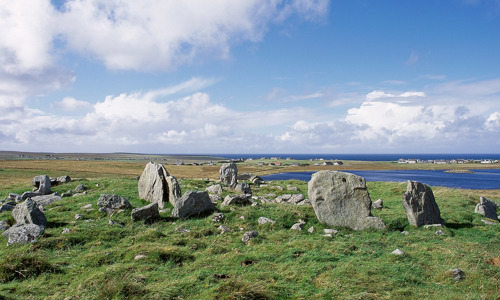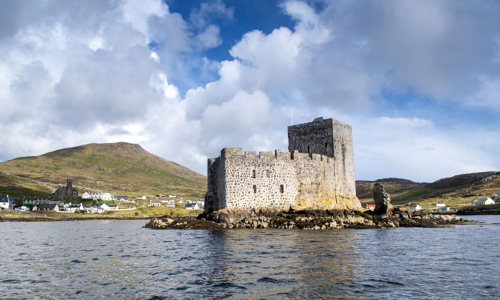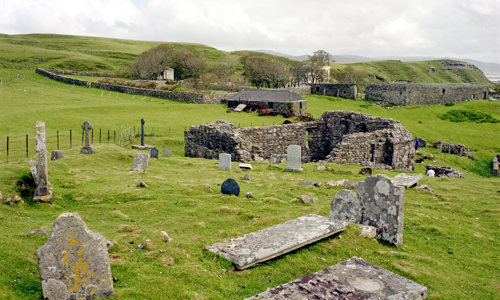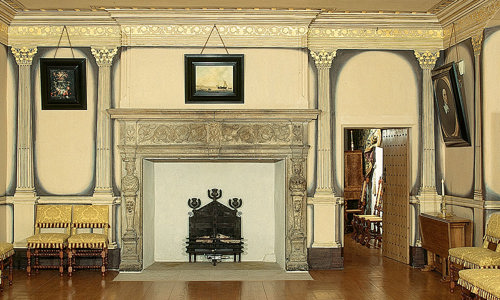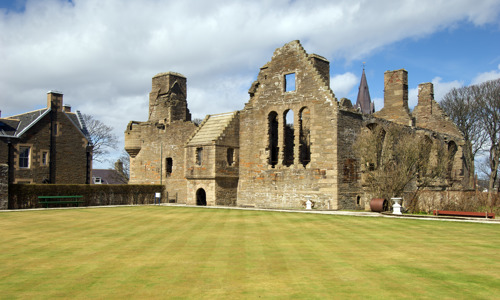History
No. 42 Arnol is a unique and precious relic. Once the home of a Hebridean crofting family and their animals, the thatched house is preserved almost as the family left it when they moved out in 1965.
For hundreds of years it was the norm in rural Scotland for people and their animals to live under the same roof. A good number of Hebridean blackhouses were still used as homes in 1965, but none are left today. No. 42 Arnol is all that remains of a vanished way of life.
Arnol township
Arnol has been a settlement for more than 2,000 years. Yet the houses of the present township, Baile an Truiseil, have only been in their current places for a little over 100 years.
The original site of Arnol was by the seashore, just above a rocky beach called Mol a’ Chladaich. The ruins of small, oval-ended stone houses are still visible here.
Mackenzie of Seaforth, the then landlord, drove the move inland in 1795. There have been three ‘new’ Arnols since then. The move to the present ridge took place as recently as 1853.
The blackhouses were abandoned as homes in the 1920s. No. 39, briefly used as a weaving shed, was excavated in 1995.
No. 42 Arnol
The blackhouse, or taigh-dubh in Gaelic, was built between 1852 and 1895. It may look primitive, but this kind of dwelling was well suited to the harsh climate and the residents’ scarce resources.
Blackhouses were very different from modern homes, as they:
- housed animals as well as people
- had rounded corners
- had no chimney or windows
Sharing with animals made the house warmer and meant fewer buildings were needed.
The blackhouse has a central door. Inside is an aig an teine (‘living room’) and a bathaich (‘cattle byre’), with a parallel sabhal (‘barn’).
The peat fire in the centre of the living room was the heart of family life and was never allowed to go out. Smoke from the peat fire killed insects, and the smoke-laden thatch – which was replaced every so often – made excellent fertiliser for the fields.
From blackhouse to white house
All homes built in Arnol up to 1900 were blackhouses – double-walled dwellings simply known as taighean (‘houses’).
A different type of house appeared when new health regulations required byre and dwelling to be separated by a wall. The single-walled dwellings cemented with lime mortar were such a contrast they were called taigh-geal (‘white house’). The term taigh-dubh (‘blackhouse’) was used to describe the old houses from then on.
We also look after the white house at no. 39, which was built in the 1920s and lived in until 1976. You can see straight away that it is built in a style more familiar to us today.
The white house has:
- solid walls
- windows that open
- a pitched roof
- chimneys
The interior of the white house has been restored and furnished much as it would have been in the late 1950s and early 1960s.
Natural history
The coastal grassland found along the shore is known as machair, a Gaelic word meaning an extensive, low-lying fertile plain. It is one of Europe’s rarest habitat types and occurs only along the coastline and islands of north-west Scotland and north-west Ireland.
Machair is famous for the varied flora and fauna it supports. Look out for:
- a huge variety of wildflowers in early summer
- the rare red-necked phalarope which nests here – there are only about 30 nesting pairs in Scotland


